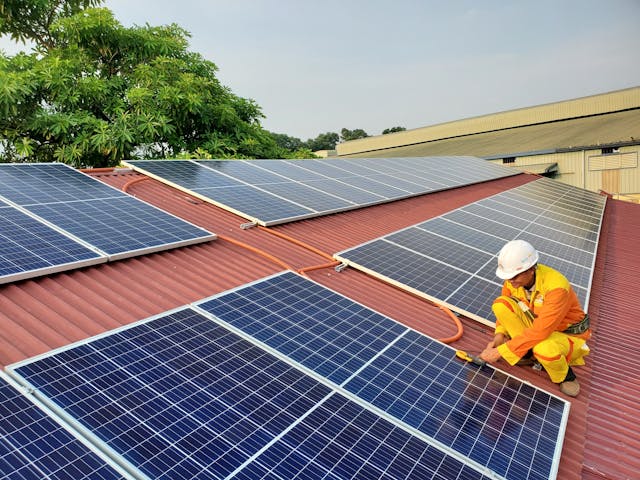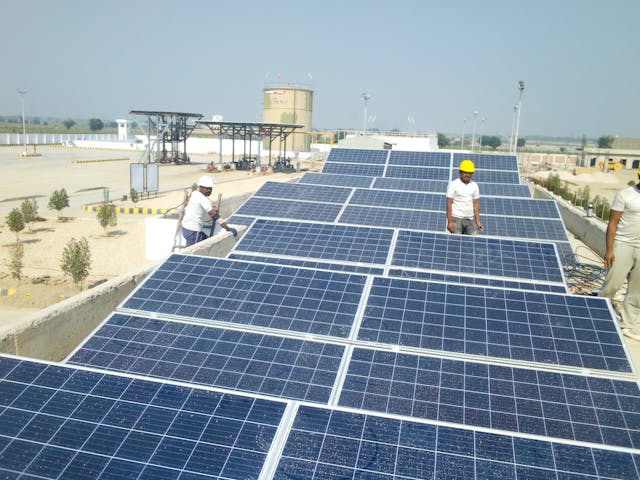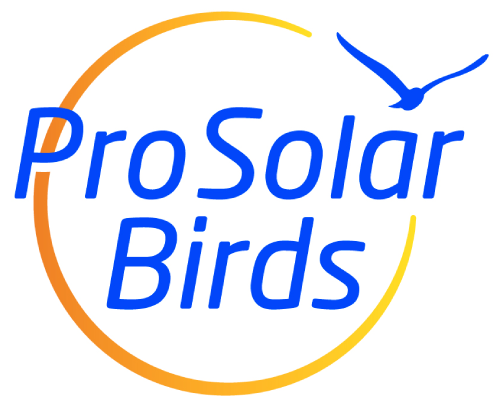The global shift towards renewable energy sources has led to a significant increase in the installation of solar panels across residential, commercial, and industrial sectors.
Solar panels offer a clean and sustainable way to generate electricity, reducing our reliance on fossil fuels and lowering carbon emissions. However, like any technology, solar panels require maintenance and protection to ensure their longevity and efficiency.
One often overlooked challenge is the potential damage caused by birds. This article explores the importance of protecting solar panels from bird-related damage and the various anti bird systems available that are both effective and respectful of wildlife.
Table of contents
- The Importance of Properly Protecting Solar Panels
- How Birds Can Damage Your Solar Panels
- Bird-Friendly Anti Bird Systems
- Frequently Asked Questions (FAQs)
The importance of properly protecting solar panels
Solar panels are a significant investment, and their efficiency and longevity are crucial for achieving a return on that investment. Solar panels are designed to withstand various environmental factors, including rain, wind, and hail. However, bird activity around solar panels can lead to issues that these installations are not inherently protected against.
Birds are attracted to the warmth and shelter that solar panels provide, making them a preferred location for nesting and roosting. The presence of birds can lead to several problems, including:
- Physical Damage: Birds can cause direct physical damage to solar panels and their associated components. This includes scratching or pecking at the panel surface, which can reduce the panel’s ability to capture sunlight effectively.
- Debris Accumulation: Bird droppings, feathers, and nesting materials can accumulate on solar panels, obstructing sunlight and reducing the panels’ efficiency. In some cases, this debris can also lead to corrosion or other long-term damage.
- Electrical Issues: Bird nests and droppings can interfere with the wiring and electrical components of solar panels, potentially leading to short circuits, fire hazards, or costly repairs.
- Maintenance Costs: The presence of birds often necessitates frequent cleaning and maintenance of solar panels, which can be time-consuming and costly. Without proper protection, these maintenance costs can quickly add up, reducing the overall financial benefits of solar energy.
Given these potential issues, it is clear that protecting solar panels from bird-related damage is essential. Implementing anti bird systems can help ensure that solar panels continue to operate at their maximum efficiency while minimizing the need for costly repairs and maintenance.

How Birds Can Damage Your Solar Panels
Understanding how birds can damage solar panels is the first step in implementing effective protection measures. Birds typically interact with solar panels in the following ways:
- Nesting Under Panels: Birds often find the space underneath solar panels to be an ideal location for building nests. The shaded and sheltered environment provides protection from the elements and predators. However, these nests can block airflow and create hotspots on the panels, which can lead to overheating and reduced efficiency. In some cases, nests can also cause damage to the wiring and support structures of the panels.
- Droppings on Panels: Bird droppings are highly acidic and can cause significant damage to the surface of solar panels. When droppings accumulate, they block sunlight from reaching the photovoltaic cells, reducing the amount of energy the panels can generate. Over time, the acid in the droppings can etch the glass surface of the panels, leading to permanent damage and a decrease in efficiency.
- Pecking and Scratching: Some bird species, such as crows and magpies, are known to peck at shiny objects. Solar panels, with their reflective surfaces, can attract these birds. Pecking and scratching can damage the protective layers of the panels, leading to reduced performance and the need for repairs.
- Interference with Wiring: Birds can chew on or dislodge the wiring associated with solar panels, leading to electrical issues. This type of damage can be difficult to detect until it results in a malfunction, at which point repairs can be expensive.
Bird-Friendly Anti-Bird Systems
While it is important to protect solar panels from bird-related damage, it is equally important to do so in a way that does not harm the birds or disrupt their natural behaviors. Fortunately, there are several bird-friendly anti bird systems available that effectively protect solar panels while being respectful of wildlife.
- Bird Mesh and Netting: One of the most common and effective methods of preventing birds from nesting under solar panels is the use of bird mesh or netting. These materials are installed around the edges of the solar panels, creating a barrier that prevents birds from accessing the space beneath them. Bird mesh is usually made of durable, UV-resistant materials that can withstand outdoor conditions. Importantly, the mesh or netting is designed to be non-invasive and does not harm the birds. It simply deters them from nesting in undesirable areas.
- Bird Spikes: Bird spikes are another popular method of deterring birds from roosting on solar panels. These spikes are installed on the edges of the panels or other areas where birds are likely to perch. The spikes make it uncomfortable for birds to land, encouraging them to find alternative roosting sites. Bird spikes are typically made of stainless steel or plastic and are designed to be safe for birds. They do not harm the birds but effectively prevent them from causing damage to the panels.
- Visual Deterrents: Visual deterrents, such as reflective tape, predator decoys, or moving objects, can be used to scare birds away from solar panels. These deterrents play on birds’ natural fear of predators or unfamiliar objects. For example, reflective tape produces flashes of light that mimic the glint of a predator’s eyes, while decoys like plastic owls or hawks create the illusion of a predator being present. Visual deterrents are a non-invasive and bird-friendly way to keep birds away from solar panels.
- Sonic and Ultrasonic Devices: These devices emit sounds that are either audible or inaudible to humans but are unpleasant for birds. The sounds are designed to mimic the distress calls of other birds or the noises made by predators, encouraging birds to avoid the area. Sonic and ultrasonic devices are effective at deterring birds without causing them harm. However, it is important to choose devices that are specifically designed not to disturb other wildlife or humans in the vicinity.
- Regular Maintenance and Inspection: Regular maintenance and inspection of solar panels are essential to ensure that any bird-related issues are identified and addressed promptly. This includes cleaning the panels to remove bird droppings and debris, checking for signs of nests or wiring damage, and ensuring that any anti-bird systems in place are functioning correctly. By maintaining a proactive approach, potential problems can be mitigated before they escalate.

Frequently Asked Questions (FAQs)
-
Do anti bird systems harm birds?
- Most modern anti-bird systems are designed to be bird-friendly and do not harm birds. They simply deter birds from nesting or roosting on or near solar panels.
-
Are anti bird systems expensive?
- The cost of anti-bird systems varies depending on the type and size of the installation. However, they are generally a cost-effective solution when compared to the potential damage and maintenance costs that can arise from bird-related issues.
-
Can I install anti bird systems myself?
- While some anti-bird systems, such as visual deterrents or bird spikes, can be installed by homeowners, it is often advisable to have a professional install more complex systems like bird mesh or netting. This ensures that the installation is effective and does not compromise the performance of the solar panels.
-
How do I know if birds are causing damage to my solar panels?
- Regular inspection of your solar panels can help identify signs of bird-related damage. Look for nests under the panels, droppings on the surface of the panels, and any visible damage to wiring or the panels themselves. If you notice a decrease in the efficiency of your solar panels, this could also be a sign of bird-related issues, and it may be worth having a professional assessment.
Conclusion
Protecting solar panels from bird-related damage is an essential aspect of maintaining their efficiency and longevity. Birds can cause significant damage to solar panels through nesting, droppings, and interference with wiring, leading to reduced performance and increased maintenance costs.
Implementing bird-friendly anti bird systems is a responsible and effective way to safeguard your investment in solar energy. By choosing appropriate deterrents, such as bird mesh, spikes, visual deterrents, and sonic devices, you can protect your solar panels without causing harm to birds or the environment.

